0 / 32
0 / 32
Muay Thai for Beginners: Your Ultimate Guide
November 1, 2024
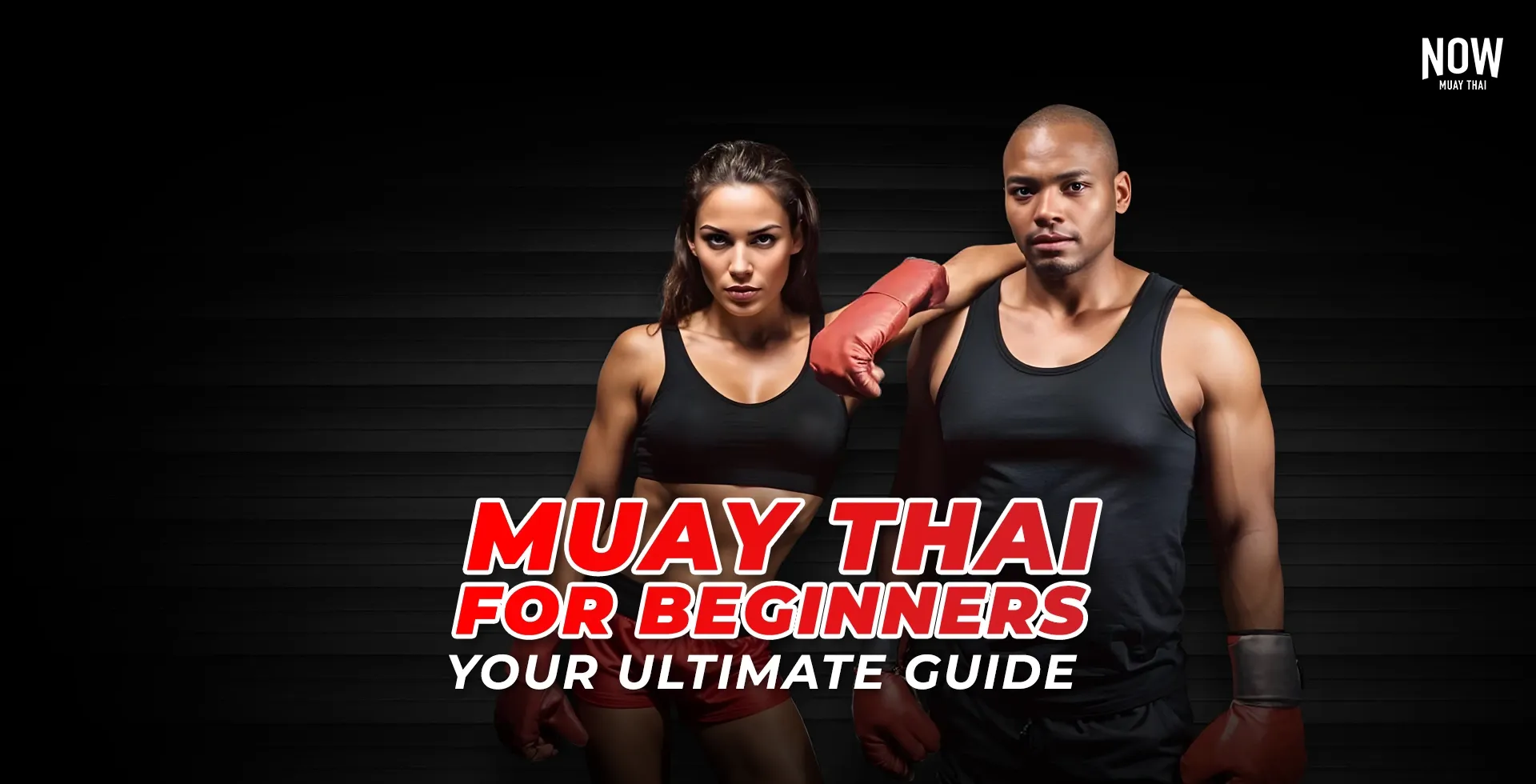
Thinking about starting Muay Thai but feeling unsure? You’re not alone. For many beginners, especially those considering training in Thailand, Muay Thai can seem intense, fast-paced, and maybe even intimidating. But here’s the truth: Muay Thai is highly adaptable, welcoming everyone—from complete beginners to those with some kickboxing experience. It’s a journey of growth, confidence, and community that offers not only physical benefits but also a deep dive into Thai culture.
This guide will clarify what to expect from a beginner’s Muay Thai class in Thailand, covering foundational skills, conditioning, and the supportive, encouraging atmosphere that awaits. Whether you’re coming from a different martial art or trying something entirely new, starting with beginner basics is invaluable. It’s the perfect way to solidify foundational skills, refine your form, and build confidence step by step. Use this guide to gauge your readiness and see if Muay Thai aligns with your goals. Soon, you’ll discover that this journey offers more than just physical fitness—it’s a chance to immerse yourself in an inspiring, powerful martial art within its authentic Thai setting.
What to Expect in Your Beginners Class
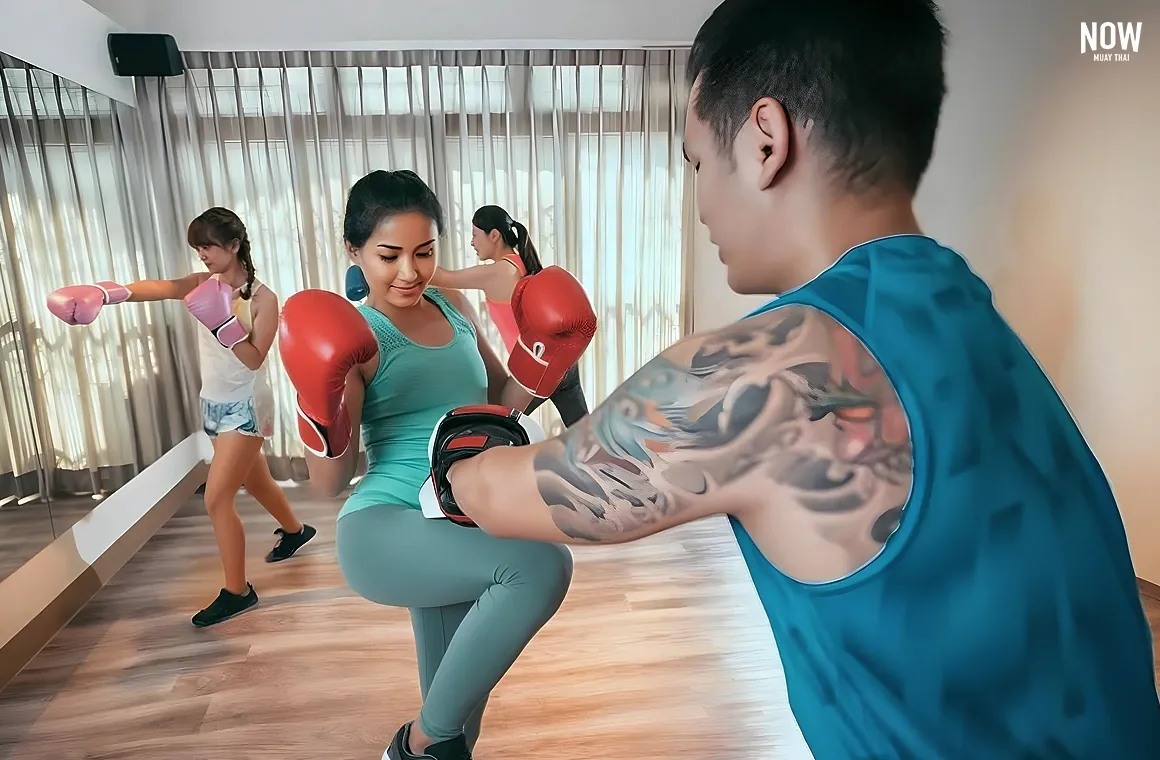 A group of excited women enjoying their Muay Thai beginner's class, fully engaged in training and having fun as they learn the basics of this dynamic martial art.
A group of excited women enjoying their Muay Thai beginner's class, fully engaged in training and having fun as they learn the basics of this dynamic martial art.
Stepping into a Muay Thai for Beginners class is an exciting introduction to the art of eight limbs, giving you a foundation in essential skills like stance, footwork, punches, kicks, elbows, and knees. This class is beginner-friendly, paced to help you get comfortable with each move while building strength and confidence. It's an ideal way to start your journey and check in on your basic skills foundation. Ready to start?
Basic Muay Thai Skills for Beginners
1. Stance and Footwork
In Muay Thai, mastering the basics of stance and footwork is crucial for beginners because it forms the foundation of every movement, strike, and defense. A solid stance provides balance and stability, allowing you to throw powerful kicks and punches without losing control. Proper footwork enables smooth movement, distance control, and effective evasion—key skills for both offense and defense.
 A Muay Thai beginner demonstrates a proper guard stance, focusing on fundamental positioning. This essential stance helps beginners build a solid foundation, ensuring correct form and balance as they progress to more advanced techniques in Muay Thai.
A Muay Thai beginner demonstrates a proper guard stance, focusing on fundamental positioning. This essential stance helps beginners build a solid foundation, ensuring correct form and balance as they progress to more advanced techniques in Muay Thai.
Check out the essentials of Stance and Footwork in Muay Thai for Beginners
Stance
Purpose of the Stance: The Muay Thai stance is the foundation of all techniques, giving balance, power, and mobility for both attack and defense. A proper stance allows you to strike, block, and move efficiently.
Positioning: Start by placing your feet shoulder-width apart. Your lead foot (left foot for right-handed fighters) should be slightly forward, and your rear foot angled at roughly 45 degrees.
Weight Distribution: Keep your weight evenly distributed between both legs but slightly favoring the balls of your feet. This stance lets you stay light, ready to shift or spring forward as needed.
Knees Bent: Keep your knees slightly bent to maintain a low center of gravity, allowing for faster and more explosive movements.
Posture
Purpose of Good Posture: Posture ensures you maintain control over your balance and keeps you stable when both striking and defending. Good posture also supports muscle alignment, reducing the risk of injury.
Back and Shoulders: Keep your back straight and your shoulders relaxed. Avoid hunching forward; instead, maintain an upright position to stay balanced and ready to move in any direction.
Core Engagement: Keep your core slightly engaged (tense but not rigid). This gives extra power for strikes and improves stability when blocking or absorbing hits.
Head Position: Your chin should be slightly tucked to protect against incoming punches, while your eyes remain focused forward to maintain awareness of your opponent’s movements.
Guard
Purpose of the Guard: The guard is essential for defense, helping to shield your face and body from strikes while keeping you ready to counterattack.
Hand Positioning: Keep both fists up near your cheekbones, with your lead hand slightly in front and your rear hand closer to your face. This setup ensures you can quickly defend against or deliver punches.
Elbow Positioning: Your elbows should stay close to your body to protect your midsection and ribcage. Keeping your elbows tight also helps when transitioning to offensive moves, like throwing elbows and punches.
Hand Movement: While your guard stays in place, your hands should remain active, with small movements to prepare for blocking, parrying, or countering. Avoid stiff, fixed hand positions; instead, stay alert and ready to adjust.
Footwork
Purpose of Footwork: Effective footwork helps you maintain balance, close distance to strike, create space to defend, and move laterally to avoid attacks.
Movement Fundamentals: Practice small shuffling steps rather than large strides. When moving forward, step first with your front foot, followed by your back foot; when moving backward, step first with your back foot, then your front.
Lateral Movements: Shifting sideways is essential for evading strikes or circling your opponent. Step to the side with the lead foot, keeping your weight balanced to avoid overcommitting and becoming vulnerable.
Pivoting: Pivoting helps you change direction quickly while maintaining balance. To pivot, rotate on the ball of your lead foot while allowing your rear foot to follow. Pivoting can help with defense or open angles for striking opportunities.
Practice and master the basics of stance and footwork—the core of every movement in Muay Thai and essential for striking or defending. Next, dive into the art of using Muay Thai’s ‘8 limbs’—punches, elbows, knees, and kicks—and explore defensive techniques. Let’s go!
2. Punches
Punches in Muay Thai are fundamental strikes that set up combinations, create openings, and apply pressure. Each punch is executed with a focus on balance, body rotation, and precise targeting.
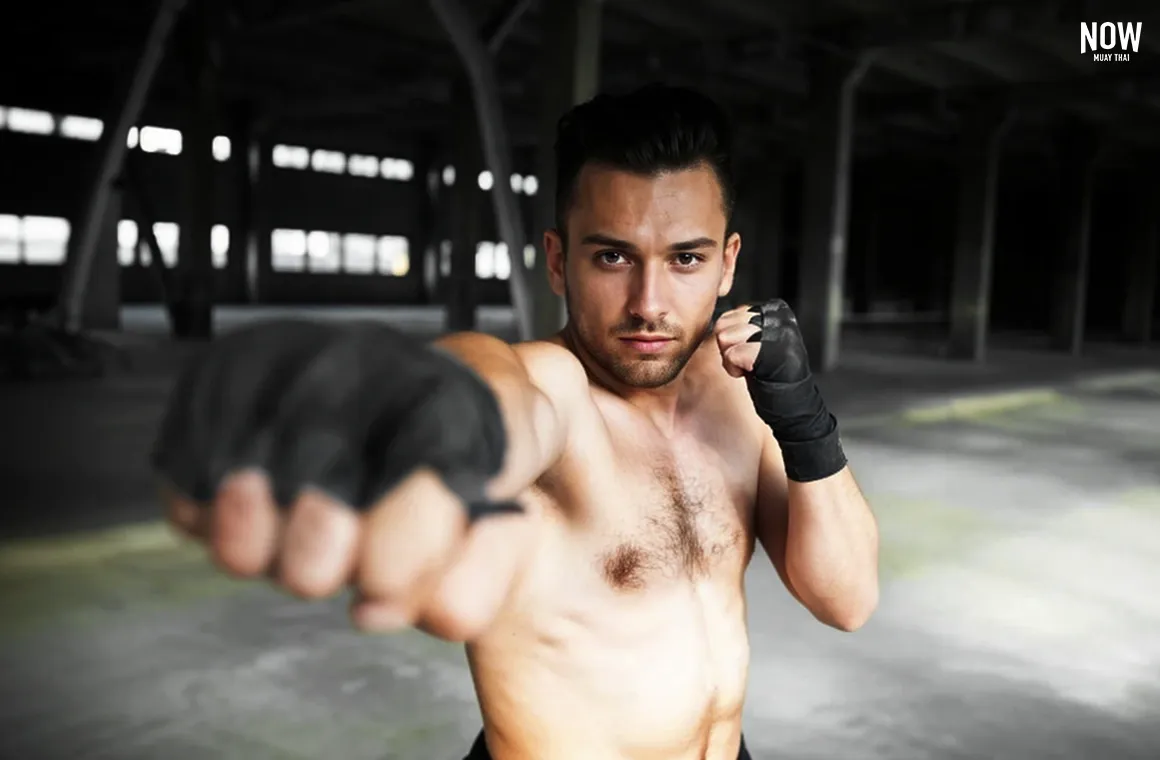 A beginner practices basic Muay Thai punches, focusing on the “straight punch” technique. This involves using coordinated strength from the shoulder, torso, hips, and grounded footwork to drive power toward the target. Mastering this technique is key for developing strong, effective punches in Muay Thai.
A beginner practices basic Muay Thai punches, focusing on the “straight punch” technique. This involves using coordinated strength from the shoulder, torso, hips, and grounded footwork to drive power toward the target. Mastering this technique is key for developing strong, effective punches in Muay Thai.
- Jab The jab is a quick, straight punch with the lead hand that helps gauge distance, disrupt an opponent’s rhythm, and set up stronger strikes.
- Cross: The cross, or straight punch, is a powerful, direct strike with the rear hand, often used to follow the jab. It’s a key punch for delivering high impact with precision.
- Hook: A circular punch targeting the side of the opponent's head or body. Twist your hips for maximum impact.
- Uppercut: An upward punch directed at the opponent's chin or body. Bend slightly at the knees to add power from your legs.
Practice proper form by keeping your hands high to protect your face and pivoting your feet and shoulders for each punch.
3. Kicks
In Muay Thai, kicks are powerful tools used to strike, control distance, and disrupt an opponent’s rhythm. Each kick is delivered with precision and force, using the shin as the primary striking surface to maximize impact. Here’s an introduction to four essential Muay Thai kicks:
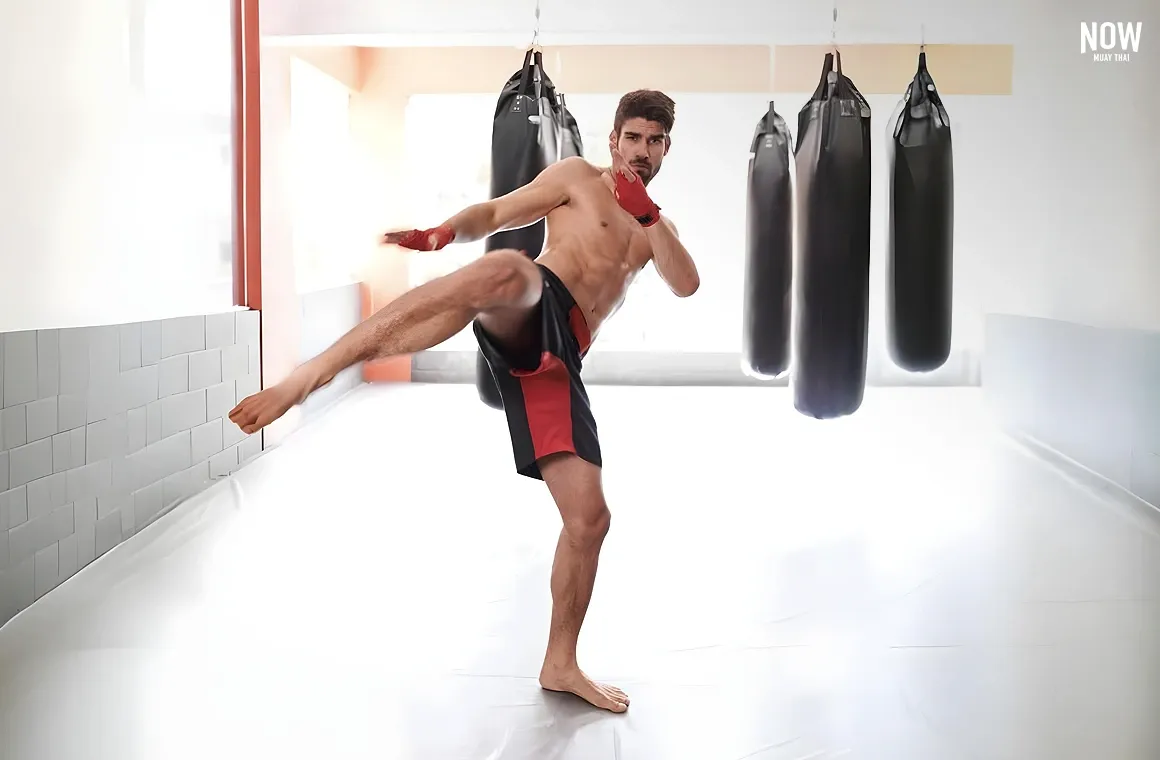 A beginner practices Muay Thai kicking techniques, focusing on the powerful shin kick, which uses the leg from the hip to the shin as a striking tool, much like swinging a sturdy stick.
A beginner practices Muay Thai kicking techniques, focusing on the powerful shin kick, which uses the leg from the hip to the shin as a striking tool, much like swinging a sturdy stick.
- Low Kick: The low kick targets the opponent’s thigh or calf, aiming to wear down their legs and reduce their mobility and power. To execute, pivot on your standing foot and rotate your hips fully to strike the thigh with your shin. Low kicks are quick, powerful, and effective for breaking down your opponent’s foundation and weakening their stance over time.
- Body Kick: The body kick is aimed at the midsection or ribs, delivering a powerful strike that disrupts breathing and slows down the opponent. Swing your hips and rotate on your standing foot, using the shin to impact the opponent’s ribs or lower abdomen. Body kicks are great for controlling distance and adding force to your attacks, making it tougher for opponents to advance.
- Head Kick: The head kick, one of Muay Thai’s most powerful moves, aims to end the fight or deliver a decisive blow to the opponent’s head. With a strong hip rotation and pivot on your standing foot, extend your shin toward the head, requiring balance and flexibility. Head kicks have knockout potential, demanding precise timing and control, and can turn the tide of a fight instantly.
4. Push Kicks (Teep)
Push kicks, or "teeps," are essential techniques in Muay Thai, used to control distance, disrupt an opponent’s rhythm, and create space. By pushing with the foot rather than striking with the shin, push kicks allow fighters to keep opponents at bay and set up offensive opportunities.
 A beginner learning the Muay Thai teep kick, a foundational technique where the toes, ball of the foot, or heel make contact with an opponent. The teep kick can be used in various ways, such as a straight push or a side teep, to control distance and disrupt an opponent’s balance effectively.
A beginner learning the Muay Thai teep kick, a foundational technique where the toes, ball of the foot, or heel make contact with an opponent. The teep kick can be used in various ways, such as a straight push or a side teep, to control distance and disrupt an opponent’s balance effectively.
- Front Push Kick: The front push kick is a straightforward teep used to control distance, push opponents back, and keep them off balance.
- Side Push Kick: The side push kick targets the opponent from an angle, giving you an effective tool to disrupt their positioning and create space on the side.
5. Knees
Knee strikes are essential in Muay Thai for close-range combat, delivering powerful blows to the opponent's body and head. Each knee type offers a unique way to create impact and capitalize on openings. Here’s a brief description of each type:
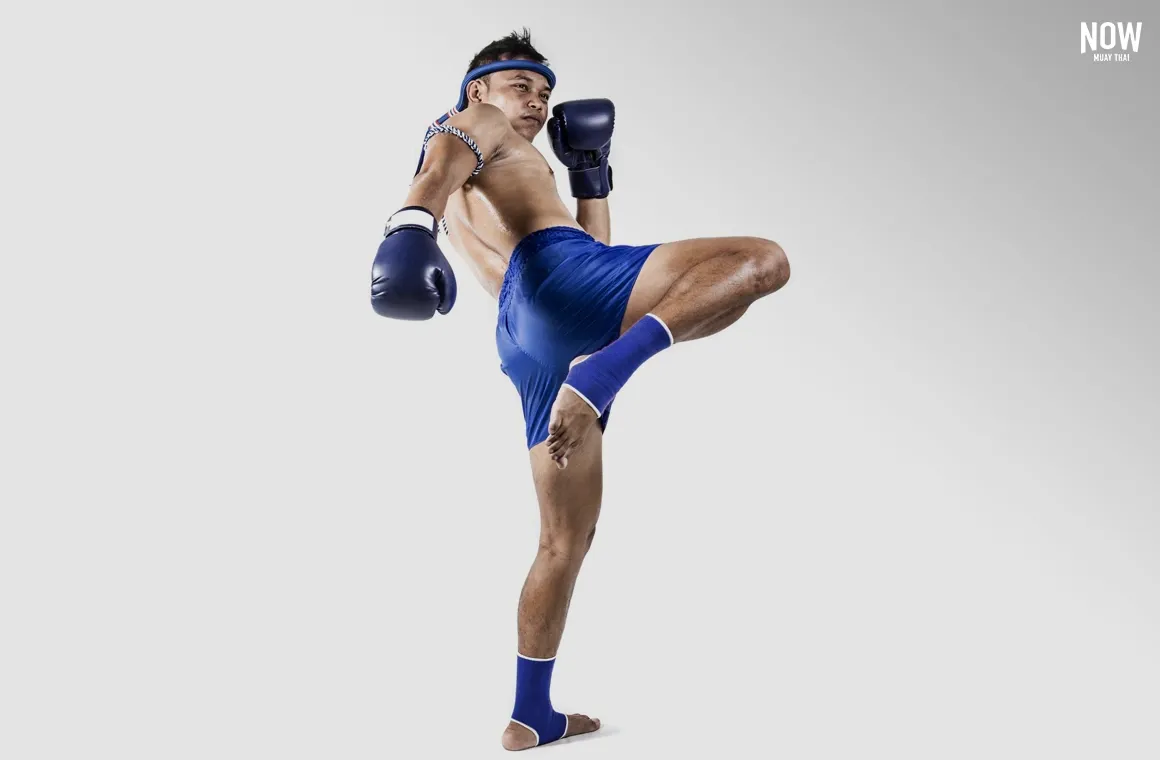 Demonstrating a basic knee strike in Muay Thai, using the knee joint to drive upward into the target. The fighter flexes the foot down to align the shin, maximizing speed and agility.
Demonstrating a basic knee strike in Muay Thai, using the knee joint to drive upward into the target. The fighter flexes the foot down to align the shin, maximizing speed and agility.
- Straight Knee: A direct knee thrust aimed at the opponent’s midsection, delivered by driving the knee forward in a straight line. Commonly used in close range or the clinch, the straight knee targets the stomach or ribs to break down an opponent’s defense.
- Curved Knee: This knee strike moves in a slight arc, targeting the opponent's ribs or sides. Often used in the clinch, the curved knee sneaks around an opponent’s guard, making it effective against tightly defended opponents.
- Jumping Swing Knee: A powerful knee where the fighter jumps and swings their knee up towards the opponent’s head or upper body. The added height and momentum make this knee highly impactful, with knockout potential if it connects cleanly.
- Long Knee: A long-range knee strike where the fighter steps forward and extends their knee to reach an opponent from a distance. The long knee targets the midsection and is used to close distance or catch an opponent off-guard during movement.
- Small Knee: A quick, sharp knee strike often delivered in rapid succession to the opponent’s thighs or body. The small knee is commonly used in the clinch to wear down the opponent with repeated, controlled impact.
6. Elbows
Elbows are highly effective, close-range strikes in Muay Thai, often used to cut, disorient, or knock out an opponent. Each type of elbow strike has a unique angle and purpose, adding versatility to a fighter's arsenal.
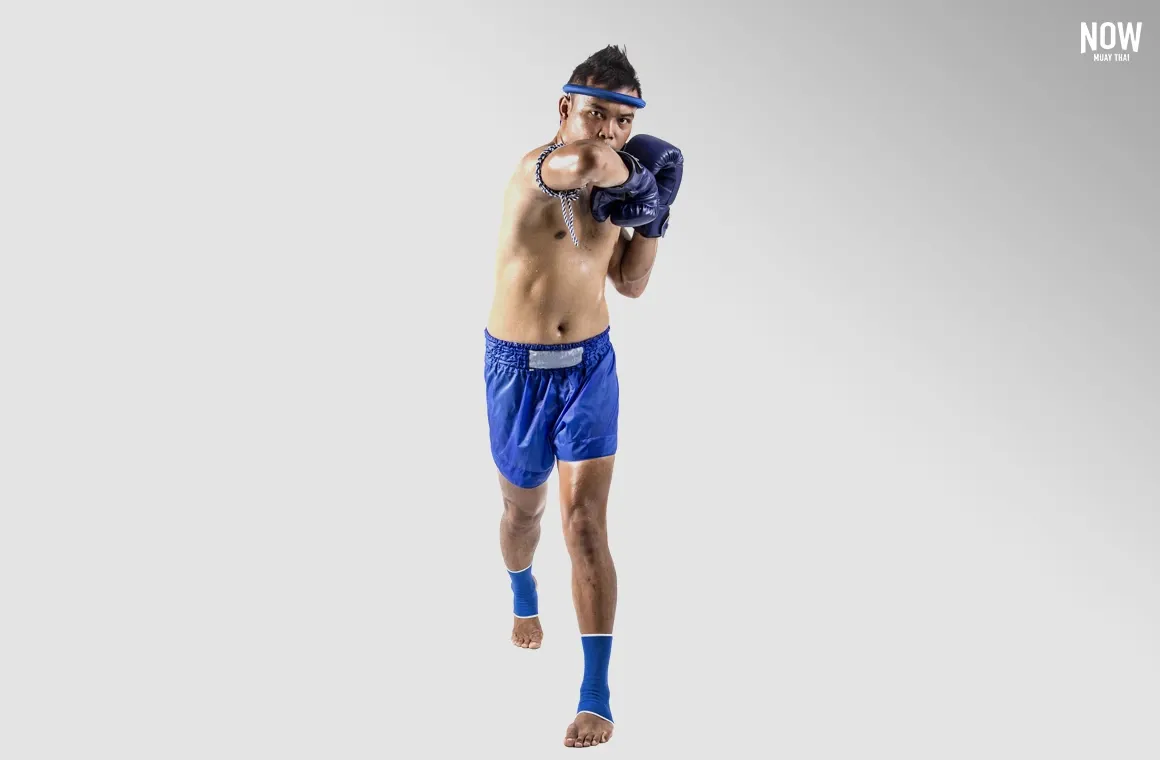 Demonstrating the fundamental Muay Thai elbow strike, known for its power and potential danger. Using the sharp bone of the elbow, this technique combines precise aim with body force to create a highly impactful and resilient strike.
Demonstrating the fundamental Muay Thai elbow strike, known for its power and potential danger. Using the sharp bone of the elbow, this technique combines precise aim with body force to create a highly impactful and resilient strike.
- Horizontal Elbow: A quick, horizontal strike delivered parallel to the ground, usually aimed at the opponent’s jaw or temple. The horizontal elbow is effective for breaking through an opponent’s guard and causing cuts or disorientation.
- Slashing Elbow: A downward-angled elbow aimed to “slash” across an opponent’s face or head. The slashing elbow is typically used to create cuts, making it an effective tool for causing visible damage that can impact an opponent’s focus.
- Upward Elbow: Delivered in an upward motion, targeting the opponent’s chin or body. The upward elbow is powerful in close range, especially in the clinch, where it can surprise an opponent and create openings.
- Downward Elbow: A forceful, downward elbow strike, often targeting the top of the opponent’s head or collarbone. The downward elbow is powerful and can generate cuts or disorientation when delivered from a higher angle, such as during a jump.
7. Basic Defensive Skills in Muay Thai for Beginners
Defense is just as important as offense in Muay Thai, allowing fighters to avoid, block, and counter incoming attacks. For beginners, focusing on these fundamental defensive skills builds confidence and helps develop the reflexes and timing needed for effective defense.
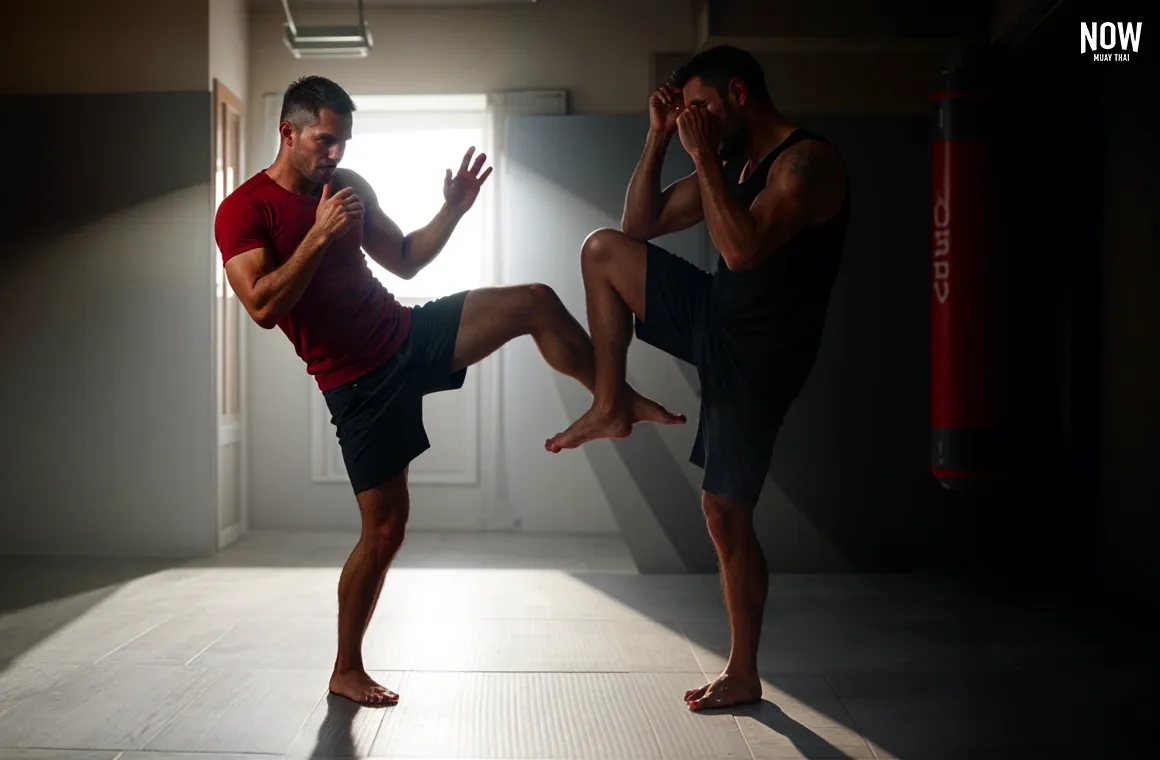 Beginner-level Muay Thai defense technique showing how to block a kick. By raising the leg to shield against incoming kicks, the practitioner effectively guards against strikes like angled or sweeping kicks. This foundational skill helps beginners develop timing and reflexes for effective kick defense.
Beginner-level Muay Thai defense technique showing how to block a kick. By raising the leg to shield against incoming kicks, the practitioner effectively guards against strikes like angled or sweeping kicks. This foundational skill helps beginners develop timing and reflexes for effective kick defense.
- Guarding: Guarding is your first line of defense, protecting vital areas like your head, ribs, and torso from incoming strikes. To maintain a solid guard, keep your fists up by your cheeks with your elbows tucked close to your body. This positioning shields against both punches and kicks while keeping your hands active and ready to block or counter. A well-kept guard is fundamental for beginners, ensuring that you're always protected and balanced, even when on the offense.
- Blocking: Blocking absorbs an opponent's attack with minimal impact, helping you stay in control while protecting vulnerable areas. For punches, raise your forearms to shield your head or ribs, maintaining a tight frame. To block kicks, lift your leg to check the kick with your shin, forming a strong barrier against the strike. Staying balanced in these positions is crucial, allowing you to immediately transition from defense to counterattack.
- Head Movement: Head movement is an evasive skill that allows you to avoid punches while keeping you in range to counter. By slipping your head to the side or leaning back, you can dodge incoming punches with minimal movement, reducing the chance of taking a direct hit. This technique requires good timing and awareness, as even a slight shift can effectively evade the attack, keeping you close enough to respond quickly.
- Footwork and Evasion: Footwork and evasion give you the mobility to avoid strikes and control the distance between you and your opponent. By stepping back, pivoting, or circling around, you can evade attacks while staying balanced and ready to counter. Small, controlled steps allow you to move out of your opponent’s line of fire, creating space to regroup or set up a counterattack. Good footwork keeps you agile and adaptable, making it harder for your opponent to land clean shots.
Is Muay Thai Hard to Learn? A Beginner's Guide to What to Expect and the Journey to Progress
Learning Muay Thai can feel challenging due to its unique techniques and physical demands, but it’s highly accessible for beginners.
Here’s a breakdown of the learning stages and expected timeline for progress:
- 1 Month - Basics: In the first month, you’ll focus on foundational techniques like jabs, crosses, front kicks, and knee strikes to build your base and coordination.
- 1-2 Months - Expanding Skills: By the second month, you’ll add variety, like uppercuts, diagonal knees, and low kicks, enhancing your power and agility.
- 2-4 Months - Intermediate: As you grow comfortable, more precise techniques, including elbow strikes and high kicks, become part of your practice.
- 4-12 Months - Advanced Techniques: Develop advanced moves such as slashing kicks, hooks, and combination strikes, boosting fluidity and adaptability.
By consistently practicing Muay Thai, you’ll build strength, timing, and mental resilience. Embrace the journey of improvement and enjoy each milestone along the way.
Pros & Cons of Muay Thai Training
Benefits of Muay Thai Training
- Physical Benefits: Muay Thai is a full-body workout that improves strength, endurance, and cardio. Regular training builds muscle tone, flexibility, and agility, while helping with weight loss through high-intensity conditioning.
- Mental Benefits: Muay Thai also develops mental resilience, relieving stress and promoting self-discipline. This training builds confidence as you gain skills and experience consistent improvement.
- Social and Cultural Connection: Training in Muay Thai encourages respect, humility, and a sense of community. Many Muay Thai gyms emphasize Thai values, deepening your appreciation for the culture.
Possible Drawbacks
- Intensity and Injury Risk: Muay Thai is physically demanding. Without proper technique and warm-up, you may face a risk of injuries. Prioritizing good form and working with skilled instructors helps reduce these risks.
- Commitment Level: Mastering Muay Thai requires dedication and regular practice. Beginners should prepare for a steady, consistent commitment to see results and enjoy long-term progress.
Why Train Muay Thai in Thailand?
 Tourists enjoying Muay Thai training in Thailand, a country rich in cultural heritage. The image captures the unique experience of blending martial arts with travel in a vibrant, culturally immersive environment—a must-try for anyone visiting Thailand.
Tourists enjoying Muay Thai training in Thailand, a country rich in cultural heritage. The image captures the unique experience of blending martial arts with travel in a vibrant, culturally immersive environment—a must-try for anyone visiting Thailand.
Training Muay Thai in Thailand offers an authentic experience steeped in tradition, surrounded by passionate trainers who have mastered the art from a young age. Practicing in a country where Muay Thai is deeply revered lets you immerse in the sport’s cultural roots, learn nuanced techniques, and gain insights into the respectful spirit behind Muay Thai.
Starting Your Muay Thai Journey
Embrace Muay Thai with dedication and perseverance to unlock the full benefits of the art. Start your journey by exploring authentic training options in Thailand through platforms like Nowmuaythai.com and experience the life-changing blend of discipline, culture, and fitness that Muay Thai offers.
Learn more about Muay Thai
Back









